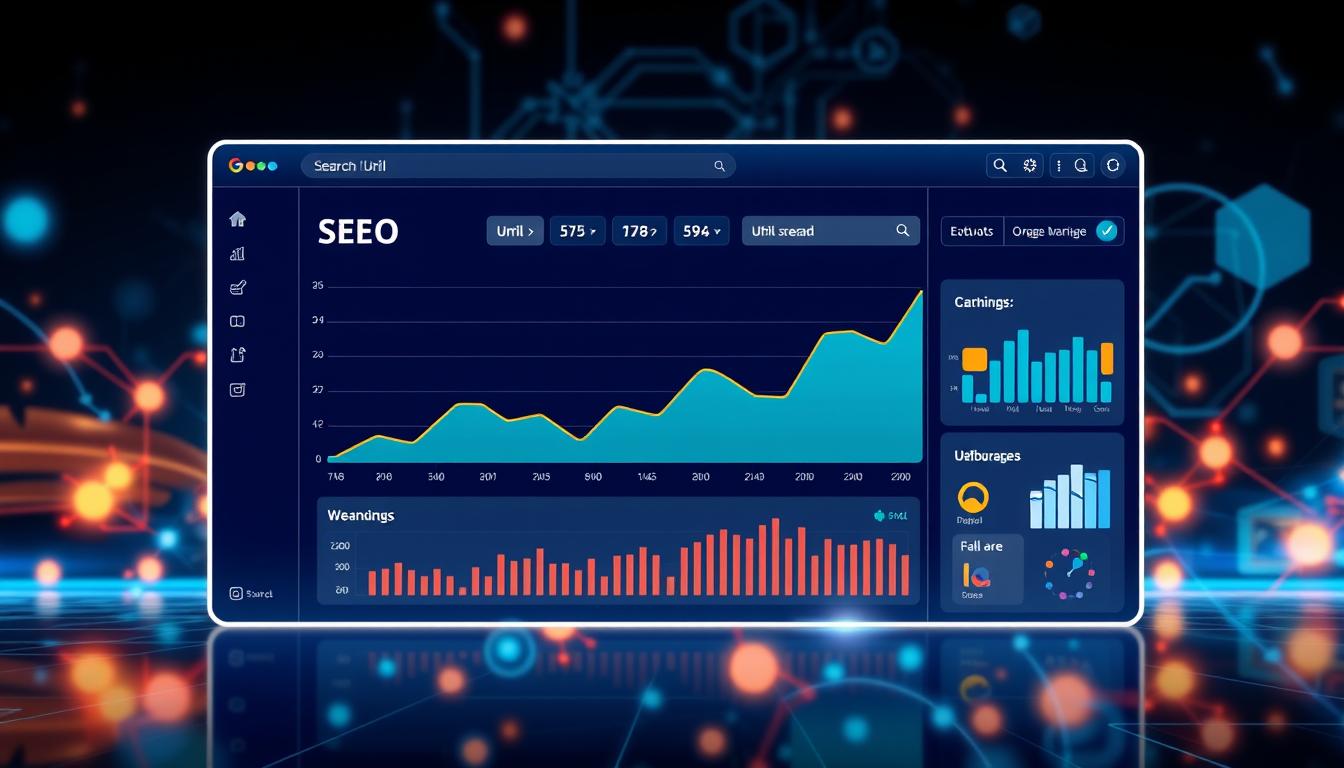SEO Rapid URL Indexer Tool: Boost Your Rankings Fast

Did you know over 80% of URLs get quickly indexed when submitted through certain services? This quick indexing boosts their search engine visibility. The SEO Rapid URL Indexer Tool is essential for businesses and website owners who want to climb the search engine rankings fast. Learning to use a URL submission tool can greatly improve your SEO strategy.
This tool is key in making the indexing process faster. This allows your website content to be quickly recognized and ranked by search engines. In this article, I’ll go over how this tool works and its benefits. I’ll also compare it to other indexing services and show how it can help boost your site’s Google ranking.
Key Takeaways
- Indexing services can achieve up to 90% indexation rates for submitted URLs.
- The Rapid URL Indexer tool accelerates the indexing of backlinks, leading to improved search rankings.
- Using a URL submission tool boosts your overall SEO performance and increases organic traffic.
- Real-time indexing reports offer insights into indexing speed and its effect on online visibility.
- Effective submission strategies are vital for the best indexing results.
Introduction to SEO and URL Indexing
Search engine optimization (SEO) is crucial for online success. It ensures content reaches the right audience. One key part of this is URL indexing, which adds web pages to search engines like Google. Without it, pages can’t be found, missing out on traffic and visibility.
It’s vital to understand how search engine visibility and URL indexing work together. Nowadays, about 91% of pages get indexed. But with over 457,191 URLs indexed, delays can cause traffic drops. This is a big deal for website owners.
Using a reliable site auditor makes a huge difference in digital marketing. It shows which pages are indexed and which aren’t. If half of my site’s pages aren’t indexed, I lose out on visibility and engagement. Tools that help with indexing are becoming popular. They make sure important content is picked up by search engines quickly.
Learning all about SEO and URL indexing is essential. If you’re serious about your online presence, mastering these skills is a must.
Understanding the Importance of URL Indexing

URL indexing is key for better search engine visibility of a site. It lets search engines find and analyze a website’s pages. This makes sure pages are listed right, affecting how fast users find what they need.
Using an indexing service well can boost a site’s rankings. It helps put content where people can see it in search results. More visibility means more organic traffic, reaching more people.
Adding URL indexing to your SEO strategy is crucial for online success. If a URL is indexed quickly, it will start getting traffic sooner. This is important for attracting and keeping visitors. So, it’s smart to focus on good indexing methods to compete online.
What is a URL Indexer?
A URL indexer speeds up how web pages get noticed by search engines. Traditional methods take weeks for a website crawler to spot new content. A URL indexer makes it quick by submitting directly to search engines. This cuts down the wait from publication to visibility a lot.
Using a URL submission tool helps my website get noticed fast. It ensures my content reaches the audience quickly. The tool is easy to use, which makes SEO work less manual. For sites that post new stuff often, this tool is crucial.
Understanding a URL indexer shows its value in SEO. It has a high success rate in getting web pages indexed. Using these tools saves time and boosts my digital game. It helps put my content first in search results, keeping me ahead in the online world.
Challenges in Manual Indexing

Manual indexing has many challenges in indexing that slow down the discovery of web pages. Common issues often come up, causing big indexing problems.
- New websites face slow crawl rates, making it hard to appear in search results.
- Lack of inbound links limits growth, complicating search engines’ ability to find content.
- Technical SEO mistakes, like wrong robots.txt settings or use of noindex tags, block indexing.
- Poor content quality or duplicate content usually results in less traffic and lower positions.
- Server mistakes and redirect issues can prevent access to web pages.
Specifically, server errors and redirect problems, along with hidden pages and missing content, are big issues for webmasters. They confuse both users and search engines, making indexing problems worse.
Tools like Google Search Console are vital for spotting indexing flaws. When combined with special SEO tools, they offer great help in solving technical SEO issues.
Never underestimate the value of unique, high-quality content. Pages with low quality are unlikely to rank well or get indexed. This hurts your online presence. Wrong canonical tags can also cause big problems, making search engines show the incorrect pages.
The manual indexing process needs careful monitoring and proactive steps.
| Indexing Problem | Common Causes | Potential Solutions |
|---|---|---|
| Slow Crawl Rates | New website, limited backlinks | Improve site structure, focus on high-quality content |
| Server Errors | Server misconfigurations | Regular audits, fix configuration issues |
| Redirect Errors | Improperly configured redirects | Review and correct redirect chains |
| Hidden Pages | Pages behind login or unnecessary redirects | Ensure visibility to search engines |
| Duplicate Content | Multiple pages with similar information | Use canonical tags appropriately, consolidate content |
Benefits of Using an Indexing Service

Using an indexing service boosts my website’s visibility and helps with search engine optimization. It makes it easy to submit URLs to search engines for quick indexing. This increases the likelihood of showing up in search results.
Rapid URL Indexer has a 91% success rate for indexing. This means most of my URLs get indexed fast, often in days. I get the first indexing report in just four days to see which URLs are indexed and which need more work.
Such services are also cost-effective. For instance, with Rapid URL Indexer, indexing 20 URLs costs only 1 USD. This is much cheaper than competing tools. It lets me monitor backlinks extensively without spending much.
Here are more benefits of using an indexing service:
- Google crawls all submitted URLs soon after submission.
- There’s no need for Google Search Console, offering more flexibility.
- A free WordPress plugin is available for easy URL submission.
- There’s a simple RESTful API for developers.
Monitoring indexed backlinks is vital for my site’s reputation. Good backlinks boost my site’s authority and affect rankings. By actively indexing backlinks, I can quickly see their benefits on my search rank. Tracking them allows me to spot and remove any harmful links that could damage my SEO.
| Feature | Benefit |
|---|---|
| Crawling Speed | Google tracks URLs almost immediately |
| Cost Efficiency | Much cheaper than other services |
| API Access | Easy integration for developers |
| Reporting | Quick insights into indexing status |
To conclude, an indexing service means faster indexing, better visibility online, and effective backlink monitoring. It ensures my website succeeds in the competitive world of search results.
SEO Rapid URL Indexer Tool: Features and Capabilities
The SEO rapid URL indexer tool has many features for those looking for indexing solutions. Knowing these features helps us do better in digital marketing and make our websites more visible. It’s important to learn about them.
Competitive Pricing and Pay-Per-Use Model
This tool is known for its competitive prices. It offers an affordable indexing solution where you pay only for what you need. You use a credit for each URL you submit. You can index 20 URLs for just $1. This way, you can manage your budget better and use the tool as you like.
High Indexing Success Rate
The SEO rapid URL indexer tool has a 91% average success rate for indexing. This high performance makes your content show up faster in search engines. This can help you get better rankings. People like these features of indexing tools because they make indexing quicker. This is key for staying ahead online.
| Feature | Description | Benefit |
|---|---|---|
| Competitive Pricing | Pay for credits based on URL submissions | Cost-effective management of indexing needs |
| High Success Rate | 91% average indexing success | Rapid content visibility in search engines |
| Pay-Per-Use Model | Flexible indexing based on actual need | Minimized ongoing costs |
How Rapid URL Indexer Outperforms Other Indexing Tools
Choosing the right SEO indexing tool is crucial in today’s competitive field. I’ve looked into several tools and found that Rapid URL Indexer stands out from the rest, like Omega Indexer. The differences in their performance and costs are significant and merit close attention.
Rapid URL Indexer has a 91% indexing success rate. This beats Omega Indexer, whose rate isn’t specified. This shows Rapid URL Indexer meets its main goal very well. When comparing tools, looking at performance helps me know which is more efficient.
Rapid URL Indexer is also more affordable. It charges $0.05 or less per URL, and offers packages like 500 credits for $25 or 5,000 for $213. Omega Indexer wants a $20 minimum for just 1,000 links. Rapid URL Indexer’s pricing helps save money without compromising on indexing quality.
There’s also an auto-refund policy with Rapid URL Indexer. If a URL isn’t indexed in 14 days, I get all my credits back. Omega Indexer doesn’t offer this. Rapid URL Indexer’s refund policy shows they care about customer satisfaction.
Rapid URL Indexer provides detailed reports, including charts and CSV files. Omega Indexer doesn’t detail its reporting, making it hard to track performance. This feature sets Rapid URL Indexer above its competition.
Rapid URL Indexer lets me submit many URLs at once, which speeds up indexing. It integrates easily with WordPress and has a RESTful API, making automated submissions simple. This is great for handling many links quickly and efficiently.
Rapid URL Indexer uses safe, white hat techniques to avoid spammy links. This keeps my site in line with search engine rules. Omega Indexer also says it uses safe sources but doesn’t explain its methods well. Rapid URL Indexer’s transparency about its safe practices gives it an edge.
Through my journey in SEO, Rapid URL Indexer has proven to be a top choice for improving indexing. It speeds up the process while being reliable and easy for users. For anyone looking to improve their indexing, Rapid URL Indexer is a strong contender.
Integrating the Indexing Tool with Your SEO Strategy
Using indexing tools can boost my SEO strategy. The SEO Rapid URL Indexer Tool improves content visibility affordably. Knowing how to integrate this tool can bring many benefits to my site.
The Rapid URL Indexer has a 91% success rate. This means most of my URLs will be indexed well, helping my search engine ranks. Unlike old methods, this tool’s pay-per-index system saves me money. I only spend on URLs that get indexed, which is smart budgeting.
This service automates the submission of new and updated posts. It makes sure search engines quickly find my fresh content. The bulk URL feature also helps manage many pages at once. This saves time during big content updates.
I get reports with charts to track progress. Email alerts keep me updated on my indexing tasks. So, the Rapid URL Indexer is a strong addition to my SEO plans. It keeps the focus on making my website better.
Tips for Optimizing URL Submission for Faster Indexing
To speed up URL submission, it’s vital to focus on high-quality content. This kind of content pulls in users and boosts search engine ranking. Making sure search engines can access the URLs is key. It’s also crucial to fix any SEO problems. Here, I’ll share tips to make URL submissions work better, within search engine rules.
Focus on High-Quality Content
Top-notch content is key for better URL submission. Google looks for unique and interesting content when it indexes. Consider these important steps:
- Consistency in Publishing: Keep publishing new, high-quality content often. This keeps your site fresh and aids in quick indexing.
- Utilizing XML Sitemaps: They’re easy to make and work well with Google Search Console, guiding indexing efficiently.
- Internal Linking: Good internal links mean new pages get noticed. This is crucial for Google to find and index them.
- Active Social Media Promotion: Promoting content on social media drives traffic. It shows Google your content is worth noticing.
Following these steps should help get my content seen sooner in search results. This draws more visitors and boosts search rankings.
Common Mistakes to Avoid When Using an Indexer
Many website owners make errors when using indexing tools that can harm their SEO. A big mistake is submitting content that’s low quality or duplicated. This makes it hard for search engines to find value in these pages. This can lead to bad indexing results and less traffic.
Another mistake is depending too much on indexing tools without fixing basic website issues. Essential SEO problems, if ignored, can stop indexing. For instance, if a site is hard to crawl, important pages might get missed in the indexing process.
Not optimizing for mobile is another error. With Google emphasizing mobile-first indexing, sites without a mobile-friendly design might lose visibility. Also, a slow website can hurt user experience and rankings. This is especially true with Google’s focus on Core Web Vitals.
Having a confusing website structure is also problematic. It makes it tough for search engines to navigate a site properly. Clear, well-thought-out URLs help search engines understand a site’s layout. This makes for better indexing results. It’s crucial to make sure your site lives up to search engine standards.
Dealing with duplicate content is key. Use canonical tags to prevent indexing confusion. The “noindex” tag is good for keeping low-value pages out of search results. This helps focus on the pages that matter. Regular site checks for issues like thin content or errors in robots.txt are needed. This keeps your site quality up and maintains its credibility with search engines.
| Mistake | Effect on SEO | Solution |
|---|---|---|
| Submitting Duplicate Content | Confuses search engines, leading to poor indexing | Use canonical tags for consolidation |
| Neglecting Mobile Optimization | Reduces visibility on mobile searches | Implement a mobile-friendly design |
| Ignoring Page Speed | Increases bounce rate, lowers rankings | Optimize images and streamline coding |
| Poor URL Structure | Hinders search engines from understanding content | Create clear and descriptive URLs |
| Over-optimization of Anchor Text | Affects credibility and user experience | Use varied and natural anchor text |
Conclusion
Using the SEO rapid URL indexer tool can change how well my site does. It makes indexing quicker, helping my site show up better in searches. For example, a shop owner in London saw their organic traffic rise by 20% with this tool.
Being able to submit lots of URLs at once is great for big websites. Indexing happens faster, cutting down the usual long wait. Most sites see their content in search results in about 24-48 hours. This quick action improves rankings and draws in traffic sooner.
For the best outcomes, it’s important to use the SEO rapid URL indexer tool with other SEO tactics. This means picking the best URLs and making content that follows search engine rules. Tracking indexed pages with things like Google Analytics lets me see how well it’s working for my site.





